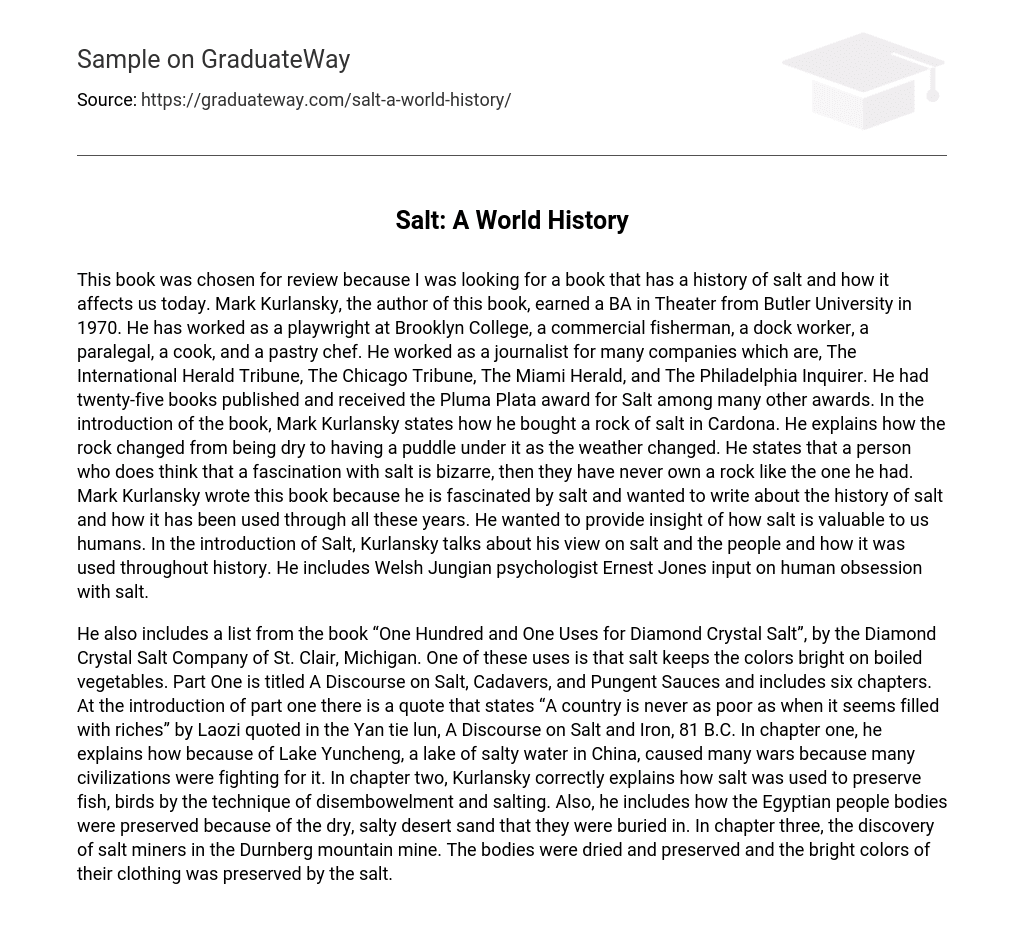This book was chosen for review because I was looking for a book that has a history of salt and how it affects us today. Mark Kurlansky, the author of this book, earned a BA in Theater from Butler University in 1970. He has worked as a playwright at Brooklyn College, a commercial fisherman, a dock worker, a paralegal, a cook, and a pastry chef. He worked as a journalist for many companies which are, The International Herald Tribune, The Chicago Tribune, The Miami Herald, and The Philadelphia Inquirer. He had twenty-five books published and received the Pluma Plata award for Salt among many other awards. In the introduction of the book, Mark Kurlansky states how he bought a rock of salt in Cardona. He explains how the rock changed from being dry to having a puddle under it as the weather changed. He states that a person who does think that a fascination with salt is bizarre, then they have never own a rock like the one he had. Mark Kurlansky wrote this book because he is fascinated by salt and wanted to write about the history of salt and how it has been used through all these years. He wanted to provide insight of how salt is valuable to us humans. In the introduction of Salt, Kurlansky talks about his view on salt and the people and how it was used throughout history. He includes Welsh Jungian psychologist Ernest Jones input on human obsession with salt.
He also includes a list from the book “One Hundred and One Uses for Diamond Crystal Salt”, by the Diamond Crystal Salt Company of St. Clair, Michigan. One of these uses is that salt keeps the colors bright on boiled vegetables. Part One is titled A Discourse on Salt, Cadavers, and Pungent Sauces and includes six chapters. At the introduction of part one there is a quote that states “A country is never as poor as when it seems filled with riches” by Laozi quoted in the Yan tie lun, A Discourse on Salt and Iron, 81 B.C. In chapter one, he explains how because of Lake Yuncheng, a lake of salty water in China, caused many wars because many civilizations were fighting for it. In chapter two, Kurlansky correctly explains how salt was used to preserve fish, birds by the technique of disembowelment and salting. Also, he includes how the Egyptian people bodies were preserved because of the dry, salty desert sand that they were buried in. In chapter three, the discovery of salt miners in the Durnberg mountain mine. The bodies were dried and preserved and the bright colors of their clothing was preserved by the salt.





